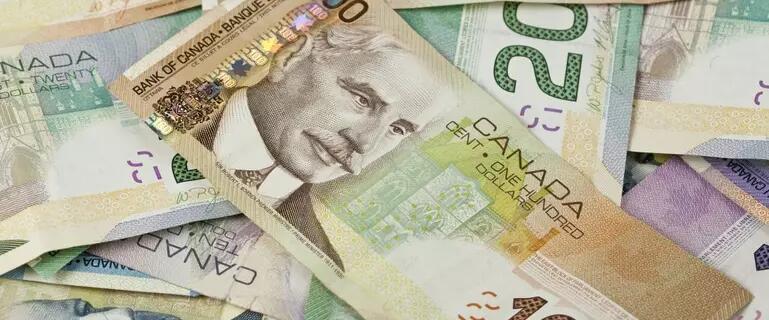In a previous essay, Drew Fagan highlighted similarities between the Canadian government's response to COVID-19 and its actions during World War II. Here, he takes a deeper look at government spending during the COVID-19 crisis and reflects on lessons learned from World War II expenditures. This essay is a collaboration with Policy Speaking by Public Policy Forum, a series of blogs and podcasts focusing on the COVID-19 crisis.
The Second World War is on people’s minds and not just because this month marks 75 years since VE Day.
The COVID-19 pandemic and government’s response – to ramp up government spending, to run immense deficits, to convert manufacturing capacity to produce in-demand products like ventilators and masks – are being compared to the extraordinary efforts to win the war.
Indeed, as the weeks go by, the comparison seems increasingly apt.
Parliamentary Budget Officer Yves Giroux, in his most recent “illustrative scenario” dated April 30, projected a federal deficit for the 2020/21 fiscal year of $252.1-billion, a huge increase from the estimate a month earlier of $112.7-billion. The latest figure amounts to almost 50 per cent of government spending – or just where it was during the peak of the war effort from 1942 to 1945. This only happened once before, during the First World War. (Mr. Giroux added this week that the deficit forecast is "probably on the very optimistic side.")

Still, it may be the period immediately after World War II that shines a light on what could come next, at least for government finances, if – fingers crossed – the pandemic’s impact is measured in months and not years. If so, the expenditures on the millions of Canadians who’ve lost their jobs, and other government supports, may end as quickly as they started, as the economy comes back to life.
That’s what happened 75 years ago, anyway. The decline in government spending as Canada demobilized was as steep as the growth was in the years after the country went to war in 1939.
Ottawa’s spending was almost eight times higher at the end of the war as at the beginning. But government spending shrank by almost 50 per cent in just one year -- from 1945 to 1946 -- and declined by another one-sixth in 1947 as spending on national defense almost came to a halt.
National defense ate up almost 60 per cent of Ottawa’s budget of just over $5-billion in 1945, at $2.9-billion. In 1947, it amounted to $196-million, less than ten per cent of a total budget of $2.2-billion, according to the study A Federal Fiscal History by Livio Di Matteo, a professor at Lakehead University in Thunder Bay, Ont.
Meanwhile, government revenues remained essentially flat, fortified by the punishing tax rates imposed during the war. The result, as the PBO notes, is that Canada recorded its largest-ever surplus in 1947, a full five per cent of GDP.
From biggest-ever deficit to biggest-ever surplus is quite a trick. And the budget remained in surplus through 1951, one of the longest streaks since Confederation.
Alex Souchen, an historian at Trent University in Peterborough, Ont., researches demobilization, which is an under-studied aspect of military affairs. In his 2016 PhD thesis on Canada’s “peace dividend,” he notes that plans for the post-war period began early in the war, when victory was hardly assured and memories were still bitter of “the interwar experience with veterans’ rehabilitation as well as the economic turmoil of the Great Depression.” Planning focused on rapid repatriation and reintegration of the armed forces into civilian life and rapid disposal of military assets – from munitions sometimes just dumped at sea to the “boneyard fleet” of warships and other vessels left in the hands of decommissioning “surgeons.”
“Practically every belligerent nation used ocean dumping for destroying surplus and captured arsenals. Ocean dumping became the preferred destruction method for a variety of reasons that were generally linked to the numbers involved, storage problems, financial costs, a lack of foreign markets, and public safety concerns,” Dr. Souchen writes.
About 1.1 million men and women enlisted throughout the war, almost one-in-ten Canadians. But in a meeting of the Cabinet Committee on Defense in September, 1945 (formerly the War Committee), the navy was told to cut its numbers to 10,000, the army to between 20,000 and 25,000, and the air force to 15,000 to 20,000.
The turnaround in the federal accounts didn’t come solely on the backs of the military which, as another study contends, had as its postwar objective “simple survival.” The war economy had operated on the premise that military needs trumped civilian wants, invariably with civilian acquiescence. As a result, and owing to the fact that unemployment was minimal during the war, Canadians were flush and eager to splurge. The baby boom reinforced this trend.
The record surplus in 1947, noted the federal public accounts, was a reflection of the “unprecedented rate of economic activity … and the maintenance of tax rates at levels as high as is reasonably practicable in the circumstances, in order to produce a surplus that could be used to make the loans and advances that the Government is required to make, and also provide funds for the redemption of some of the huge governmental debt that has accumulated during the period of the war.”
There had been fears that peace would usher in a return to depression-like circumstances. The economy was expanding in the late 1930s from the depths of the Depression but it was the war – especially in Canada, which produced more than its share of military hardware among Allied countries – that caused the economy to boom. Many citizens remembered too that the economy after World War I had been uneven, made worse by the 1918-19 Influenza Pandemic. (The federal government’s revenues and expenditures balanced in 1911 at $136-million but Ottawa would run a substantial deficit until 1923.)
The command-led economy of World War II transitioned remarkably seamlessly, however, to the demand-led economy of the post-war years. The withdrawal of the stimulus of military spending hardly had an impact amid the consumer-led expansion. Military expenditures started to grow again a few years later with the creation of NATO as Cold War tensions deepened – spending would be ten times higher in 1952 than the $196-million spent in 1947. But the overall economy ticked along at its own pace, seemingly oblivious to military affairs in a way that would have been inconceivable a decade earlier.
There are many differences between then and now, beginning with the fact that we were literally fighting a war then, while we are metaphorically fighting a war now vis-à-vis COVID-19.
· Federal government debt as a share of GDP peaked at almost 110 per cent at the end of World War II. The huge deficit this year will take the debt/GDP ratio to 48.4 per cent from 30.6 per cent, according to the PBO. (Still, this is an unprecedented jump for peacetime, especially considering that the provinces are running up big spending increases too. The OECD has noted in recent years that Canada, among industrialized countries, “stands out for its high level of subnational debt.”)
· Though the deficit as a share of government spending will be the same this year as it was during the war, total government spending during the war was a much bigger part of the economy. Government spending then peaked at more than 45 per cent of GDP. Government spending now has jumped in terms of its share of GDP but to nowhere like the same level – to about 25 per cent of GDP this year, an increase of about ten percentage points in just a few years.
Those are to the good, at least in relative terms. But we also can’t count on the kind of rapid economic expansion experienced during the post-war years to grow our way out of the debt being accumulated. Interest rates are at historically low levels, keeping down payments on the debt, but growth expectations are similarly subdued, consistent with the relatively weak economic performance of recent decades.
Canada’s best year for GDP growth actually was at the height of the war – 18.7 per cent in 1942. More broadly, annual growth averaged 5.5 per cent during the 1940s and stayed steady at around four to five per cent for the next three decades to 1980, according to 2017 study by BMO Capital Markets that tracked economic indicators since Confederation.
By comparison, annual growth averaged barely two per cent over the past 20 years, weighed down by the same factors we can expect in future, even if there is a quick bounce-back when the economy reopens – weak productivity growth and an aging and slower-growing population.
Indeed, in one particularly striking way, the most apt comparison to present circumstances is the Depression. The BMO study notes that the two weakest years for the economy since 1867 were 1931 and 1932 when GDP fell 13 per cent and ten per cent respectively. The latest PBO report estimates that GDP will fall 12 per cent in 2020, making this year “by far the weakest on record” since modern tracking began in 1961.
Actually, it puts us right in the middle of the Depression, and the hardest part of the Depression at that, when conventional economic thinking demanded a laissez faire approach to policy-making. (Ottawa did run deficits throughout the 1930s but total government spending was about the same in 1937 as in 1932. Over the course of the 1930s, according to the BMO study, annual growth averaged 0.5 per cent.)
So, what is to be expected now? It depends primarily on the interplay between economic reopening and coronavirus resilience as governments try to find an optimal balance, amid citizens’ mixture of impatience and fear concerning the economy and their health.
Federal budgetary measures to respond to COVID-19 totaled $146-billion as of April 24, or almost 30 per cent of total federal spending. Emergency spending has continued since, including to support key sectors such as agriculture.
This could abate rapidly, as did defense spending after World War II. But it’s anything but certain, as the PBO recognizes. The first COVID-19 scenario analysis released on March 27 by the PBO assumed that social distancing and other pandemic measures would last six months. The most recent report assumes that these measures would be relaxed gradually and slowly but not end in 2020.



